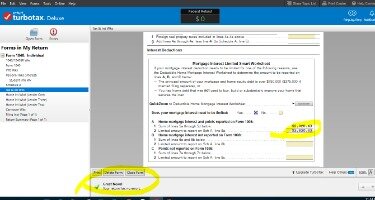Mark-to-market accounting and liquidity pricing
Contents:


Another benefit of the mark-to-market accounting treatment is that it prevents banks from overextending loans. When a company seeks a loan, this method can determine the borrower’s current financial health. For instance, if a retail chain asks for a $1 million loan to establish a new location, looking at the historical value of its assets might be a dangerous route.
On the other hand, the same account will be added to the account of the trader on the other end of the transaction. It is because the trader is holding a long position in the same futures. For example, on day 2, the value of the futures increased by $0.5 ($10.5 – $10). Investors once believed that U.S. markets were sufficiently protected from political pressure and manipulation by a system of interlocking independent agencies and rule-making bodies—some government-run, some not. That system is being dismantled, piece by piece, by political jawboning and rushed rule rewrites. Now, investors find themselves with fewer protections and weakened protectors.
Merchants & Marine Bancorp, Inc. Announces First Quarter Financial … – InvestorsObserver
Merchants & Marine Bancorp, Inc. Announces First Quarter Financial ….
Posted: Fri, 21 Apr 2023 15:49:00 GMT [source]
While every business and organization relies on assets, their value fluctuates over time, often subjected to market volatility, especially in the case of financial instruments. This is where mark-to-market accounting comes in to, well, account for those fluctuations and provide a more accurate picture of an organization’s financial situation. Commodities traders, in contrast to commodities dealers, fall somewhere in the middle of the decision-making continuum. Commodities traders need to closely scrutinize their business transactions before deciding whether to make a Sec. 475 election. If their trades are predominantly concentrated in Sec. 1256 contracts, commodities traders should avoid making a Sec. 475 election. 1256 contracts, commodities traders should consider making a Sec. 475 election.
What Is Hedge Accounting?
In addition, the results indicate that the difference in value relevance between market prices and fair value estimates decreases with the quality of investor protection. They are led by commercial banks and other home mortgage lenders, many of whom have leaned on their representatives in Congress to argue their cause. All of the same trade matching rules involved in reporting trade history for capital gains and losses apply for MTM, so having an automated method of doing so can save you many hours of work.
From equities, fixed income to derivatives, the CMSA certification bridges the gap from where you are now to where you want to be — a world-class capital markets analyst. The higher the market fluctuation, the more distorted and unstable portfolio or asset value estimations are produced. Get stock recommendations, portfolio guidance, and more from The Motley Fool’s premium services.

Mark-to-market accounting in real estate accounting means valuing real estate assets based on the price the property would sell for if it were sold today. It could also be used to determine the value of a property based on current market rents instead of using current tenants’ rents. The mark-to-market method in accounting values assets based on momentary market conditions, also known as fair value. The value is calculated based on how much a company can make if it sells the asset today.
What is the mark to market futures?
These guidelines are developed by the Financial Accounting Standards Board, a nongovernmental group of accounting and other professionals, and are binding insofar as the reporting requirements in U.S. securities law are tied to GAAP. If you are not required to file a 2018 income tax return, you make the election by placing the above statement in your books and records no later than March 15, 2019. The net result is that you realize a taxable gain or loss on your holdings for that particular tax year, even though your position is still open. Normally, you would not realize a taxable gain or loss until you closed your position in a security. The year end closing price is then used to establish the cost basis of your holdings going into next tax year.
- Some experts say this could undermine the government’s new programs to get toxic assets off banks’ books, since the higher prices will make the banks look healthier and give them less incentive to sell.
- Prior to 1993, according to Schrand, assets such as mortgages and mortgage-backed securities were generally carried on bank books according to the original loan amount.
- This partial insurance is optimal if the probability of a large amount of damage is small and the return on the long asset is high so the opportunity cost of investing in the short asset is also high.
- Since the markets for these instruments had already disappeared, the assets in the banks’ books couldn’t be valued accurately.
- If that data is not available, the next choice is Level Two, which uses prices of similar or related securities as a guide.
- So is the case with the pricing of separate constituents, including shares, futures contracts, and other securities.
The criterion for using prices is that there is an active market with continuously available prices. We suggest that it is also necessary that the market be liquid in the sense that it can absorb abnormal volume without significant changes in prices. Fair-value accounting is part of a larger set of U.S. generally accepted accounting principles, or GAAP, which provide guidelines for how public companies report their financial statements.
One strategy is to trade equities and equity options in taxable accounts and invest in ETFs, mutual funds, and REITs in IRAs. Credit has to be made in the margin account if a holder makes a profit. The ultimate purpose is to ensure that the exchange, which bears the risk of guaranteeing the trades, is firmly protected. It ensures that when the daily settlements have been made at the end of any trading day, there will not be any outstanding obligations, which indirectly reduce credit risk. A net investment hedge is used to hedge a company’s foreign currency exposure and reduce the potential reported earnings risk that may occur upon the future disposition of a net investment in a foreign operation. If your trading activities do not meet the above definition of a business, you’re considered an investor and not a trader.
You also have to file a timely 2021 Form 3115 with your 2021 tax return in 2022 and fax a duplicative copy to the IRS. Marketable SecuritiesMarketable securities are liquid assets that can be converted into cash quickly and are classified as current assets on a company’s balance sheet. Commercial Paper, Treasury notes, and other money market instruments are included in it.
Example 1: Mark To Market Loss
This paper studies the effects of bank accounting conservatism on the pricing of syndicated bank loans. We provide evidence that banks timelier in loss recognition charge higher spreads. We go onto consider what happens to the relationship between spreads and timeliness in loss recognition during the financial crisis. During the crisis, banks timelier in loss recognition increase their spreads to a lesser extent than banks less timely in loss recognition. These findings are broadly consistent with the argument that conditional accounting conservatism serves a governance role. The policy implication is that banks timelier in loss recognition exhibit more prudent and less pro-cyclical loan pricing behaviour.

If we compare mark to market accounting vs mark to model, guesswork plays a role in the latter, and values are assigned based on financial models instead of current market prices. Mark to market is an accounting method that values assets based on their current price on the market, showing how much a company can make if it sells the asset today. It provides a more accurate appraisal of an organization’s current financial state based on momentary market conditions. It allows for measuring the changing value of assets and liabilities prone to fluctuations. It will also explain the special rules surrounding the IRS section 475 election – use of the mark-to-market method of accounting for securities traders, and how to report your MTM gains and losses on IRS Form 4797.
Michigan Business Entity Search (Guide: All You Need To Know)
This bookkeeper definition in corporate accounting recognizes the gains and losses in the year they occur by adjusting pension plans with fair value. It reflects pension plans’ current returns in assets, changes in discount rates on liabilities, and other gains or losses instead of moving the revenues and expenses from one period to another, as in the smoothing approach. The mark-to-market accounting principle involves adjusting the value of an asset to reflect the current market conditions.
- Over the years, some companies have used this method to cover their financial losses.
- In cases of securities which do not have maturity, these securities will be sold before a long period for which these securities are generally held.
- Banks are then declared insolvent by regulators and forced to sell their long term assets.
- The two sectors face risks that are not perfectly correlated so there is scope for diversification.
These sales then create further downward pressure on asset values by lowering the market prices. Under heavy political pressure, FASB recently issued two proposed rules that would make it much easier for financial institutions to avoid the recognition of losses that might be tied to market-based valuation. A trader in securities or commodities may elect under section 475 to use the mark-to-market method to account for securities or commodities held in connection with a trading business. Under this method of accounting, any security or commodity held at the end of the tax year is treated as sold (and re-acquired) at its fair market value on the last business day of that year. When it comes to securities, the mark to market methodology requires using fair value instead of book value.
Their equilibrium holdings can be strategic complements or substitutes. The latter prevails when the opportunity cost of liquidity is large, incentivising banks to borrow neighbors’ reserves instead of holding their own. Consequently, the network can amplify or dampen shocks to individual banks. Empirically, network topology explains cross-sectional heterogeneity in banks’ systemic-risk contributions while changes in the equilibrium type drive time-series variation.
The objective of performing a mark to market adjustment on an asset or liability is to better assess the market value of the assets or liabilities. The FAS 157-e proposals are generally seen as loosening the requirements to make it easier for banks to use in-house systems to keep assets on their books at higher prices. Some experts say this could undermine the government’s new programs to get toxic assets off banks’ books, since the higher prices will make the banks look healthier and give them less incentive to sell. Prior to 1993, according to Schrand, assets such as mortgages and mortgage-backed securities were generally carried on bank books according to the original loan amount. A new price was substituted only after the asset was sold, and then at the sales price. Traders can fix this problem with a “do not invest” list to avoid such overlap.
Qualtrics Announces First Quarter 2023 Financial Results – StreetInsider.com
Qualtrics Announces First Quarter 2023 Financial Results.
Posted: Thu, 20 Apr 2023 20:06:00 GMT [source]
But this business was dominated by the government-authorized firms Fannie Mae and Freddie Mac, which had strict criteria for eligible mortgages. Marking to Market means valuing the security at the current trading price. Therefore, it results in the traders’ daily settlement of profits and losses due to the changes in its market value. A fair value hedge is used to hedge against a company’s exposure to volatility and changes in the fair value of an asset or liability. In order to qualify for hedge accounting, the potential changes in the asset or liability’s fair value must have the potential to affect the company’s reported earnings.
For companies in the sales of goods business, it is common practice to offer discounts to costumers. In addition to recording a debit to its accounts receivables, the company would also need to record credit to its sales revenue account. It must be based on an estimate of the number of customers likely to accept a discount. Mark to market is used in personal accounts, financial services, sales of goods, and even in the securities market. In the latter method, however, the asset’s value is based on the amount that it may be exchanged for in the prevailing market conditions. However, the mark to market method may not always present the most accurate figure of the true value of an asset, especially during periods when the market is characterized by high volatility.
CONS: Mark to Market accounting is not without some downside.
Hedge accounting attempts to reduce the volatility created by the repeated adjustment to a financial instrument’s value, known as fair value accounting or mark to market. This volatility is reduced by combining the instrument and the hedge as one entry, which offsets the opposing’s movements. Brokers use mark to market within other types of trading activity to grant investors access to margin accounts. Alternatively, to allow them to borrow funds and trade on credit to multiply their purchasing power.
This Week in Finance News: 11 Stories You Need to See – Yahoo Finance
This Week in Finance News: 11 Stories You Need to See.
Posted: Fri, 21 Apr 2023 12:02:00 GMT [source]
Once a default occurs, the loan must be classified as a non-performing asset or as bad debt. The company must establish a separate account that marks its assets’ value down. Today, mark to market is an officially-recognized and widely-adopted methodology for tracking the fair and actual value of accounts and an entity or individual’s current financial situation. The mark-to-market accounting method may be inaccurate because the fair market value is subject to an agreement between two sides willing to complete a transaction. The amount they agree upon might not reflect the actual worth of an asset. Mark-to-market accounting can help banks and lending institutions determine the fair market of collectible collateral.

Securities traders who make a Sec. 475 election will thus be taxed at the same rate on their income but will receive the more valuable ordinary loss treatment to the extent of any losses. At first glance, the notion of any taxpayer seeking to make a Sec. 475 election appears counterintuitive. Taxpayers who own securities or commodities, which are usually defined as capital assets for income tax purposes, would normally seek to exploit the preferential capital gains rate and defer recognition of gain as long as possible. A Sec. 475 election, on the other hand, converts income and losses to ordinary income and losses, and any opportunity to defer income recognition is eliminated.
Subject to haircuts and limitations, a pass-through business could be eligible for a 20% deduction on qualified business income . To make the election, simply write this statement on a sheet of paper with your name and social security number up top. Therefore, the marketable securities account would also decrease by that amount. An employee stock option is a grant to an employee giving the right to buy a certain number of shares in the company’s stock for a set price. This approach can make financial statements simpler, as they will have fewer line items, but some potential for deception exists since the details are not recorded individually. For cost savings, you can change your plan at any time online in the “Settings & Account” section.
We show that banks’ allowance estimation changed in response to the SEC’s intervention. While allowance informativeness improved for Strong Banks, informativeness declined for Weak Banks whose incentives are to understate allowances. Our results help to explain why some banks delayed loss recognition during the recent financial crisis. Using a structural model, we estimate the liquidity multiplier of an interbank network and banks’ contributions to systemic risk.